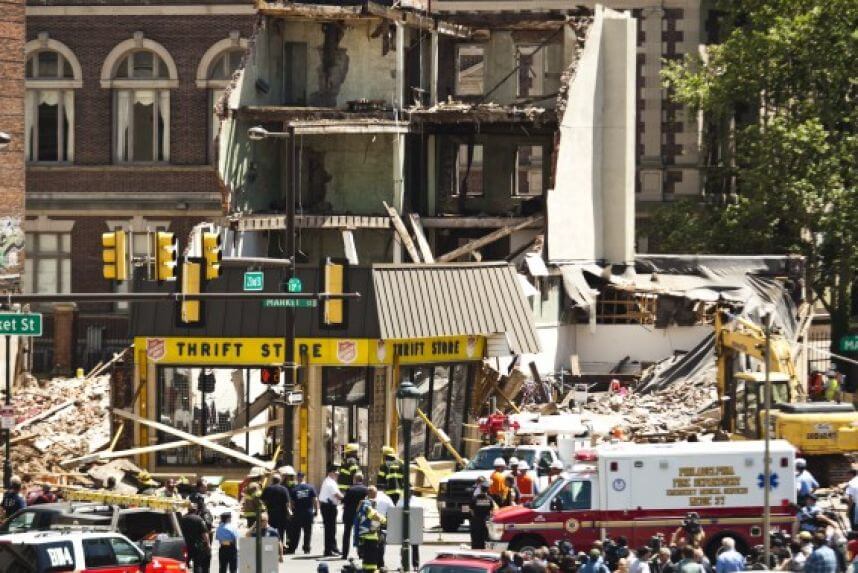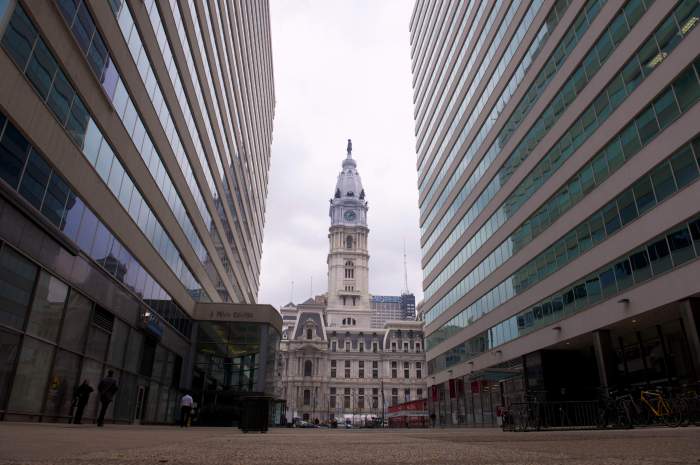Some would argue that those really responsible for the deadly wall-collapse atop the Salvation Army thrift store three years ago have yet to face justice.
That might change startingTuesday as a civil trialtargetingdeveloper Richard Basciano of STB Investments kicks off. Lawyers for the families of victims have also blamed his architect Plato Marinakos, who hired inexperienced, small-time contractor Griffin Campbell on a low bid to oversee the Center City demolition, which ended in the deadly wall collapse onto a nearby thrift shop. The 2013 collapse caused the deaths of seven and injured a dozen. Two dozen separate lawsuits filed on behalf of the victims and their families have been consolidated into a case that starts Tuesday with jury selection and could last months. Attorney Robert Mongeluzzi, who is representing several families of the victims, made clear as soon as the criminal trials were over that he holds the developer responsible.
“That jury only heard about Griffin Campbell’s fault, they did not hear about the fault of STB, Plato, otherpeople who were involved in this,”Mongeluzzi said outside of court after Campbell was convicted of six counts of involuntary manslaughter. “When it switched from hand demolition to mechanical demolition on June 2, it was in imminent danger … [and]STB or their representativeswere there every single day,” he said.
The horrific June 5 tragedy —a four-story wall from a structure under demolition collapsed onto the open Salvation Army thrift store next door —brought new light to the insufficiencies of Philadelphia city government’s safety standards at demolition sites. “We’re here to remember that they were crushed to death in a third-world style disaster that made international news,” Nancy Winkler, mother of victim Anne Bryan, said of the victims at the collapse memorial’s groundbreaking ceremony. Also killed were Juanita Harmon, Bobor Davis, Roseline Conteh, Kimberly Finnegan and Mary Simpson. A few days after the collapse, the city inspector who last visited 22nd and Market site committed suicide. He left behind messages for his wife and son lamenting his lack of “diligence” at the site ahead of the collapse. Griffin Campbell was convicted last year of involuntary manslaughter and sentenced to 15 to 30 years in prison. Backhoe operator Sean Benschop pleaded guilty to the same charges and was sentenced to 7½ to 15 years in prison. But their lawyers argued at trial that they were not responsible for the direction of the project that led to the collapse. Basciano, long known as New York’s “king of porn” and the owner of the last adult movie theaters on Market Street, had shut those and was demolishing Hoagie City for redevelopment. He has said the collapse was an accident. However, lawyers for the victims argue in court papersthat hecausedit by directingrushed,cheap demolition, the Inquirer reported. Campbell’s lawyer Bill Hobson pointed the finger at Marinakos and Bascianoduring his defense, claiming his client was being scapegoated. “There were a number of entities more culpable, who controlled methods and means of demolition,” Benschop’s attorney DaineGrey said in an interview prior to his client’s guilty plea. “If that job site was so apparently dangerous, why wouldn’t Plato [Marinakos] as the board-certified architect say ‘Hey stop this?'” Hobson argued in a previous interview. “L&I never shut it down, OSHA never shut it down.” After Campbell’s high-profile criminal trial ended in conviction, Winkler and her husband Jay Bryan filed a complaint with the state demanding that Marinakos be stripped of his license, on the grounds thatthat he failed to protect the public despite knowing of the risk. A memorial to the victims at 22nd and Market is scheduled to be finished in 2017.
Winkler said at the groundbreaking that it is intended to symbolize a “demand to our city leaders that they forever commit themselves to the highest standards of construction safety, and to the preservation and protection of human life.”
Civil trial to begin on deadly wall collapse atop thrift store

Reuters




























